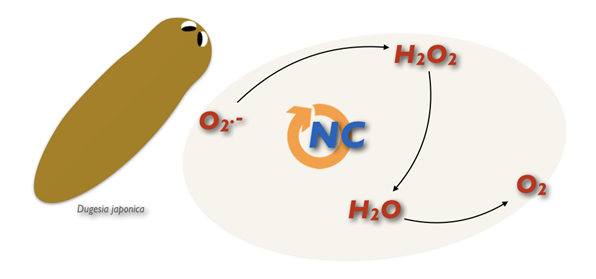Deep characterization of a nanotechnological antioxidant for space using simple invertebrates (NanOxSpace)
Research domain: LifeTech - Subtopic: Bio-MaterialsThe human exploration of space requires technologies that ensure long-term survival not only for astronauts, but also for the crops and livestock they need for food. Organisms in space or non-Earth celestial bodies will suffer for the lack of gravity and for the presence of cosmic radiations, with premature aging and degenerative diseases being major obstacles to space exploration. Both tissue senescence and degenerations depend largely on oxidative stress, and antioxidants have already been recommended for a number of pathologies caused by space travel. The supply of goods from Earth for manned spaceflight is burdensome, yet conventional antioxidant drugs require frequent administration. Most organic antioxidants are perishable, and get consumed as they exert their biological function. Proteinaceous enzymes detoxify pro-oxidant metabolites without being degraded, but are generally hard to distribute systemically when not delivered by means of genetic engineering. Better alternatives might be represented by nanomaterials. In particular, nanoceria (i.e., cerium oxide nanoparticles, NC) may provide a self-renewable, long-lasting antioxidant suitable for space missions. Owing to defects in their crystalline structure, NC display outstanding redox properties: they scavenge radicals while maintaining an intrinsic autocatalytic ability to regenerate in different environmental conditions. NC are also highly biocompatible, with essentially no known toxic effects. Our goal is to get a molecular-level understanding of the response of planarians to long permanence in simulated altered gravity, with particular attention towards dynamics associated to tissue deterioration and oxidative stress.
Project funding: European Space Agency (ESA)

The invertebrate Dugesia japonica is used to unveil the molecular bases of both bodily adaptations to simulated microgravity and possible ameliorating effects from nanoparticles.
